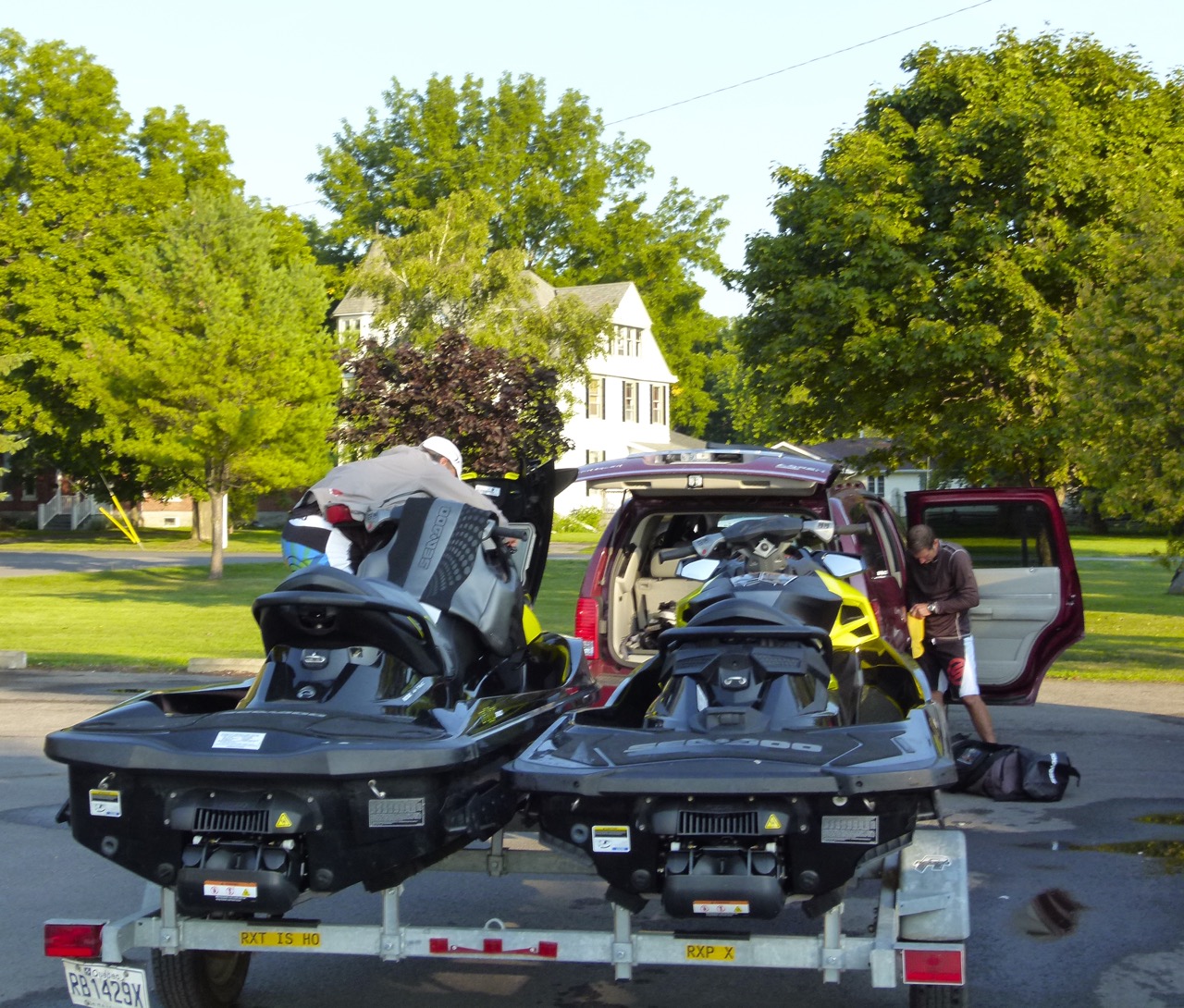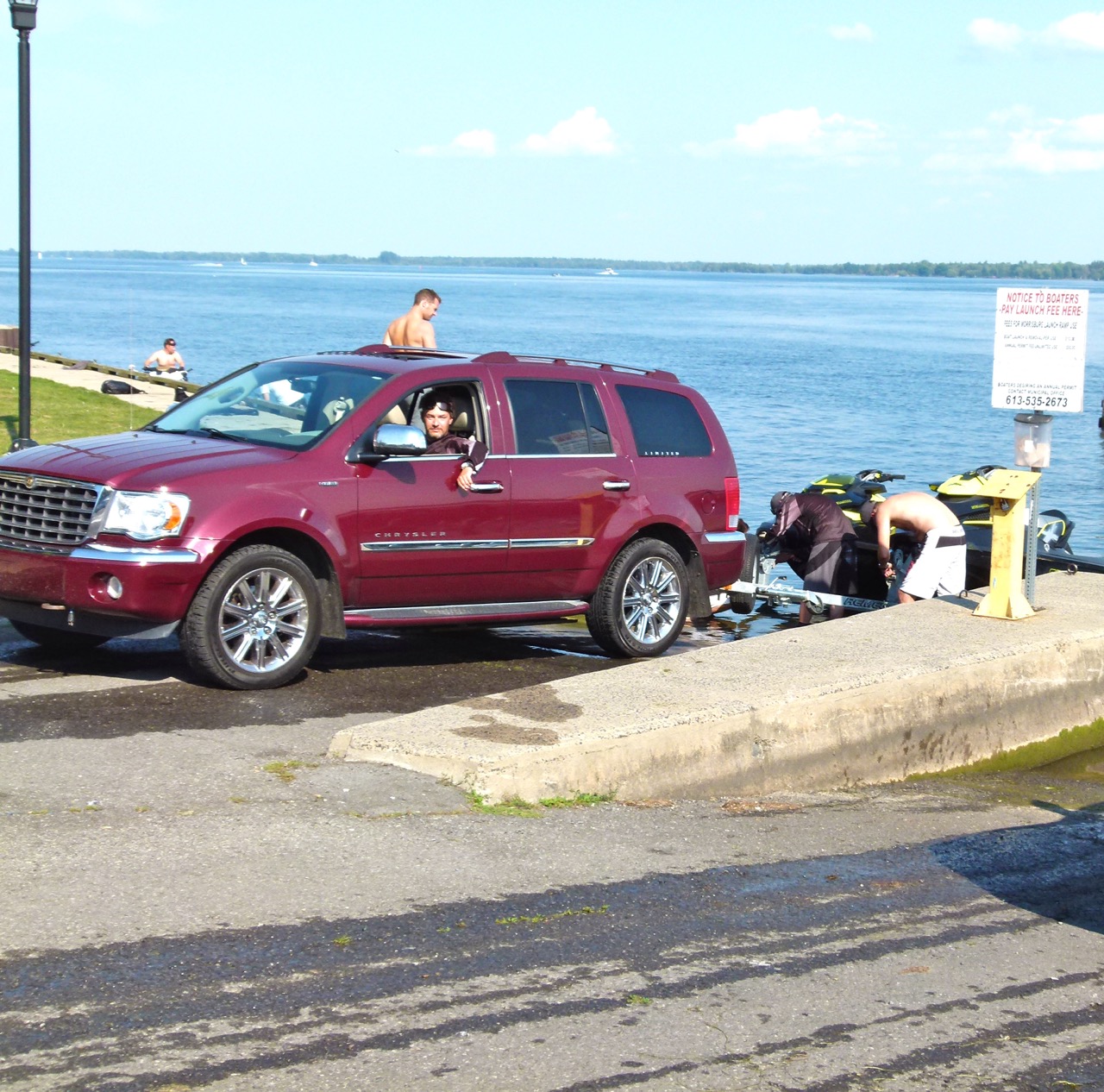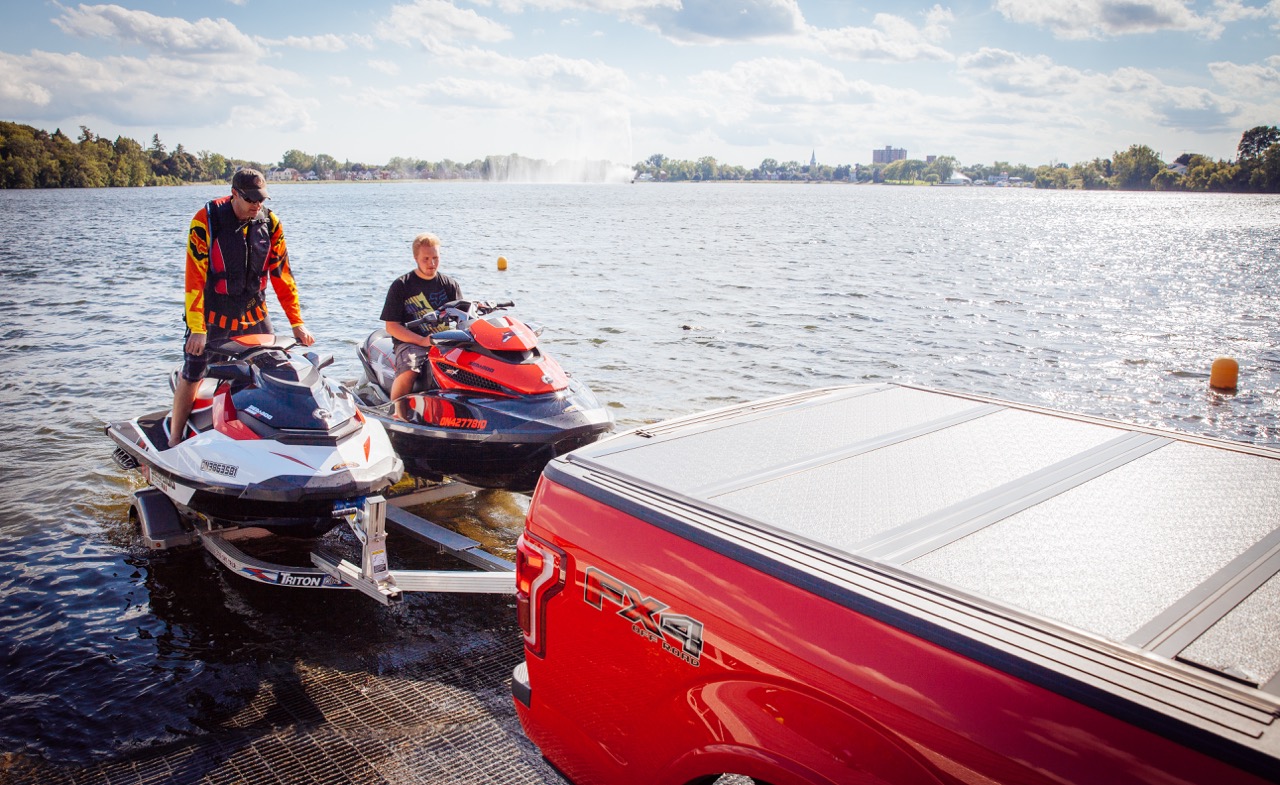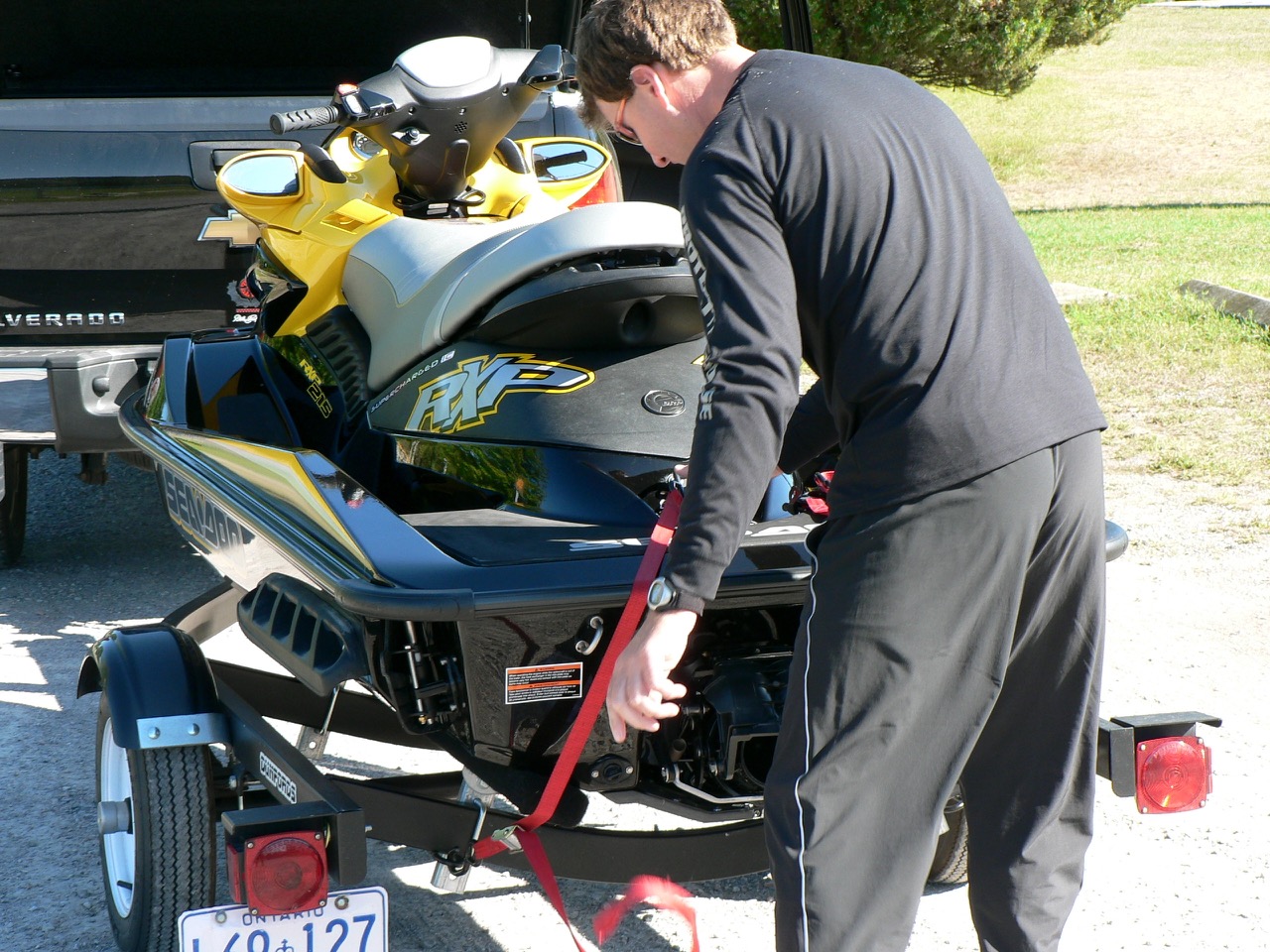Best Tips For Reloading PWC Trailers at Boat Ramps…
Related: Launching Safely
No Sea Doo ride is over without reloading your jet skis on your PWC trailer. Typically, this happens at the boat ramp where you launched safely earlier in the day. Properly securing your Sea Doo, jet ski, waverunner personal watercraft or recreational boat back on its trailer makes for safer towing home. It also enables easier launching on your next PWC adventure for experienced jet ski riders, PWC beginners or renters.
Reloading PWC Trailers – Before Backing Into the Water
With your tow vehicle in 4-wheel drive (if you have it), back down the boat ramp. If the launch is wide enough for more than one vehicle at a time, for courtesy’s sake pick a side and don’t hog the centre. Before backing into the water, check to make sure the electrical plug between trailer and tow vehicle is undone. (You should already have done this at launch time.) Also, that bunks are clear and properly positioned. Next, flip the lever on the PWC trailer winch from the lock position to allow the winch strap(s) to be pulled out freely.
Reloading PWC Trailers – Position Trailer Bunks
With carpeted bunks, back in until they are submerged. Wetting them makes jet ski loading easier. But only back in as far as you can without submerging the rear tire bearings or axles of your tow vehicle. And leave it running throughout the entire reloading process so that water doesn’t flow into the exhaust pipe.
Next, pull forward until the bunks are half out of the water. If they are in any deeper, your personal watercraft may float out of position during loading. This is especially important if you are loading alone and have to get off the jet ski to secure its front. Relieved of your weight, it might start to float away. Before exiting your tow vehicle, make sure it’s in park. I also recommend setting your parking brake as an added safety precaution.
With the trailer in place ready to be loaded, line up the jet ski centred on a set of bunks. Then drive on slowly until you’re sure the bow is properly aligned. Use the throttle to give it enough gas to seat it forward in the bunk. As soon as the personal watercraft is far enough forward, turn it off. One exception is if you’re on a very steep ramp. Here, the PWC may start to slide back when shut off. In this case, drive as far on to the trailer as possible. Then keep on the throttle until a helper can hook it up to the PWC trailer.
Reloading PWC Trailers – Hook Jet Ski Up To Trailer
If you’re reload alone, this is where you have to get off the PWC to hook the front up to the trailer. If you have an additional person at the trailer, the operator can stay in place aboard the jetski.
The person doing the trailer hook up should pull out the winch strap far enough to reach the metal eye on the PWC bow. The winch strap should go between the two metal sides that the roller is mounted to. Then it goes under the roller to hold the strap in place between the metal sides during towing.
Place the strap loop through the eye on the PWC bow. And then put the strap hook through the loop. Ensure that the safety snap on the hook is fully closed. Once hooked up, crank the winch handle to pull the jet ski as far forward as possible, preferably tight to the roller. Then flip the winch lever closed to lock it against the winch teeth.
If the ramp is very steep, you may be unable to pull the watercraft fully forward. So get it up as far as possible. Then lock the winch to hold it in place. Complete the positioning of the PWC on the trailer after it’s out of the water and on level ground.
Reloading PWC Trailers – Easy Does It
Get back in your tow vehicle and release the parking brake. Now pull the reloaded trailer out of the water and up the ramp slowly. Going slow will enable you to watch your load carefully to ensure that your personal watercraft are properly seated and secured. It will also help ensure that you don’t break a trailer tire seal. This can happen if a tire hits a submerged ramp edge or other obstacle with too much force on the pull out. You can drain your personal watercraft using the downward angle of the ramp to help. But only if there’s no line up for the ramp. Just loosen the drain plugs while the back of the trailer is out of the water but angled down the ramp.
Reloading PWC Trailers – Final Steps
For the final reloading steps, drive slowly clear of the ramp to an area where you’re not in anyone’s way. At this time you need to…
- Tie down the rear of the personal watercraft to the trailer.
- Replug the trailer’s electrical hook up into your tow vehicle.
- Remove all gear that doesn’t need to stay in your jet ski while it’s parked awaiting your next ride.
- Clean off the outer surfaces of the jet ski.
- Do a complete visual check over, looking for anything out of the ordinary that needs attention before your next ride.
- Cover the watercraft and make sure the cover is properly secured to it won’t blow off or tear in transit.
- Take your tow vehicle out of 4-wheel drive.
One final tip. Your PWC’s or recreational boat may shift or settle slightly from the motion of starting to tow. So it’s always a good idea to stop and check that your tie downs are still tight after trailering for 10 or 15 minutes. This is also a good opportunity to do a quick double check. Do a walk around inspection just to make sure everything looks okay to continue trailering. If so, you’re good to go. And ready to launch for your next Sea Doo tour!
Check out my favourite Sea-Doo rides!
If you enjoyed this post, check out my other riding tips.
The tips and advice in this article are the opinions of the author, may not work in every situation and are intended only for the convenience and interest of the reader, who has the personal responsibility to confirm the validity, accuracy and relevancy of this information prior to putting it to their own use.
Like This Post? Follow Me on Facebook!





